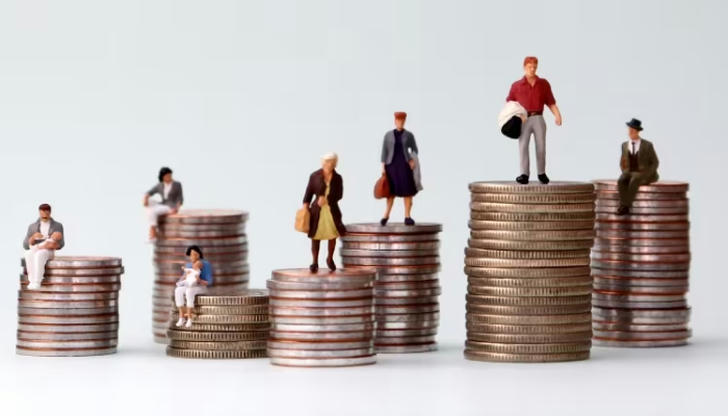Worker Pay Inequality and the Income Gap: A Global Challenge

Worker pay inequality, or income disparity, has become one of the most pressing socio-economic issues worldwide. While economies grow and industries advance, the gap between the highest and lowest earners continues to widen. This growing income inequality is not only a matter of economic efficiency but also social justice, as it impacts workers' living standards, access to opportunities, and overall well-being. This article will explore the causes and consequences of worker pay inequality, examine its effects on individuals and society, and discuss potential solutions to bridge the income gap in the global economy.
Understanding Worker Pay Inequality
Worker pay inequality refers to the disproportionate distribution of income among different segments of the workforce. This inequality can manifest in various forms, including wage gaps between genders, races, education levels, industries, and geographic regions. Workers in high-skilled jobs, particularly in sectors like technology, finance, and management, often earn significantly more than those in low-skilled positions, such as in agriculture, hospitality, or retail. There are several contributing factors to this inequality: 1.Globalization and Technological Advancement Globalization and technological innovation have revolutionized industries, creating vast wealth for some while displacing others. While companies in developed countries may thrive by outsourcing low-wage jobs to regions with cheaper labor, workers in industrialized nations often face stagnant wages and job insecurity. The rapid advancement of automation and AI also threatens to replace low-skill, labor-intensive jobs, exacerbating income disparities. 2.Education and Skill Gaps One of the key drivers of income inequality is the disparity in education and skills. Highly skilled workers with specialized knowledge in fields like engineering, finance, or medicine command higher wages than those with lower levels of education or vocational training. As a result, workers in less skilled jobs or industries that require minimal education tend to earn lower wages, further widening the income gap. 3.Labor Market Dynamics The power dynamics within labor markets also play a significant role in income inequality. Workers in industries or regions with strong labor unions and collective bargaining power tend to earn higher wages, benefits, and better working conditions. On the other hand, in industries with weak unions or non-unionized workplaces, such as gig or service jobs, workers often face lower wages and fewer benefits, contributing to the widening pay gap. 4.Wage Stagnation and Corporate Profits In many economies, wages have stagnated while corporate profits have soared. Over the past few decades, the disconnect between productivity and wages has become more apparent. In many cases, the wealth generated by companies is concentrated in the hands of executives and shareholders, leaving workers with a disproportionately small share of the economic pie. This trend is particularly visible in the United States, where the top 1% of earners have captured a growing share of national income, while wages for middle and low-income workers have remained relatively flat.
The Consequences of Pay Inequality and the Income Gap
The widening income gap has significant consequences for both individuals and society as a whole. These effects can be economic, social, and psychological, and they often reinforce each other in a vicious cycle.

1.Economic Inefficiency and Slower Growth Pay inequality can contribute to economic inefficiency. When wealth is concentrated in the hands of a few, it limits the purchasing power of a large portion of the population. This, in turn, can reduce overall demand for goods and services, slowing economic growth. The unequal distribution of income means that a substantial portion of the population has less access to education, healthcare, and other essential services, which reduces their potential to contribute productively to the economy. 2.Social Instability and Division The income gap exacerbates social inequalities and leads to social unrest. When workers perceive that the system is rigged against them, and that they are not receiving fair compensation for their labor, it breeds frustration, anger, and a sense of disenfranchisement. In extreme cases, these sentiments can manifest in political instability, protests, or even civil unrest. Income inequality fosters social divides, contributing to a lack of trust in institutions and leaders, and undermining the fabric of society. 3.Impaired Social Mobility Income inequality limits the ability of individuals to move up the social ladder. Social mobility—the ability to improve one's economic status—is significantly reduced in highly unequal societies. Children born into low-income families often lack access to quality education, healthcare, and job opportunities, perpetuating the cycle of poverty. This has a long-term impact on the overall development of a country, as large segments of the population are unable to reach their full potential. 4.Mental Health Issues and Well-being The psychological effects of income inequality are profound. Research has shown that high levels of inequality correlate with higher rates of mental health problems, including stress, anxiety, depression, and substance abuse. Workers who feel they are not fairly compensated for their labor may experience feelings of worthlessness, frustration, and dissatisfaction, which can lead to poor mental health and decreased well-being. Additionally, the strain caused by economic insecurity can create long-term health problems, such as heart disease and chronic stress. 5.Racial and Gender Disparities Income inequality often disproportionately affects marginalized groups, such as women and people of color. Gender pay gaps and racial wage gaps persist in many countries, including developed economies. In sectors such as healthcare, education, and technology, women and minority groups often face discrimination and are paid less than their male or white counterparts for the same work. This exacerbates existing social inequalities and hinders the potential of these groups to achieve economic independence and upward mobility.
Potential Solutions to Bridge the Income Gap
Addressing worker pay inequality and reducing the income gap requires concerted efforts from governments, businesses, and workers themselves. Here are several potential solutions to tackle this pressing issue:

1.Progressive Taxation and Wealth Redistribution Governments can play a crucial role in reducing income inequality by implementing progressive taxation systems that ensure the wealthiest individuals and corporations pay a fair share of taxes. These funds can be used to invest in public services, such as education, healthcare, and affordable housing, which help reduce inequality and provide workers with the tools they need to succeed. Additionally, social safety nets, such as unemployment insurance, child care support, and pensions, can help ensure that low-income workers are not left behind. 2.Living Wages and Minimum Wage Increases Raising the minimum wage is a direct way to address income inequality for low-wage workers. In many countries, the minimum wage has not kept pace with inflation, meaning that workers are increasingly unable to cover basic living expenses. By raising the minimum wage to a living wage—one that reflects the cost of living and provides workers with a decent standard of life—governments can help ensure that all workers are compensated fairly for their labor. 3.Investing in Education and Skills Development One of the most effective ways to reduce income inequality is to invest in education and vocational training. By providing workers with the skills and knowledge needed to transition into high-demand, high-wage jobs, governments and employers can help close the income gap. Initiatives to make education more accessible and affordable, particularly for low-income and marginalized groups, will ensure that all workers have the opportunity to succeed in the digital economy. 4.Corporate Responsibility and Fair Pay Practices Businesses also have a role to play in addressing income inequality. Corporations should adopt fair pay practices, ensuring that workers are paid equitably based on their experience, skills, and job responsibilities. Companies can conduct regular pay audits to identify and address gender and racial pay gaps. Furthermore, employers should invest in their employees' long-term development through training programs, career advancement opportunities, and a commitment to workplace diversity and inclusion. 5.Strengthening Labor Rights and Unions Empowering workers through stronger labor rights and unions is another key solution to reducing income inequality. Labor unions have historically played a vital role in advocating for fair wages, benefits, and working conditions. In regions where unions are weak or non-existent, workers often face lower wages and poorer working conditions. By strengthening unions and providing workers with a collective voice, we can ensure that workers are better able to negotiate fair pay and benefits, reducing the wage gap. 6.Universal Basic Income (UBI) Some experts argue that a universal basic income (UBI)—a regular, unconditional payment to all citizens regardless of their employment status—could be an innovative solution to income inequality. UBI would provide a safety net for workers displaced by automation and digitalization and help reduce poverty and income disparities. While UBI is still a topic of debate, its implementation in pilot programs around the world has shown promising results in reducing income inequality and improving quality of life.
Conclusion
Worker pay inequality and the widening income gap are complex issues that require comprehensive solutions. As globalization and technological advancements continue to reshape the economy, addressing these disparities is essential to ensure a fair and just society. Governments, businesses, and workers must work together to implement policies that promote fair wages, equitable opportunities, and social mobility. By investing in education, raising the minimum wage, ensuring corporate responsibility, and strengthening labor rights, we can begin to bridge the income gap and create a more inclusive and sustainable global economy. The fight against income inequality is not just an economic imperative—it is a moral one that impacts the social fabric and overall well-being of all members of society.

